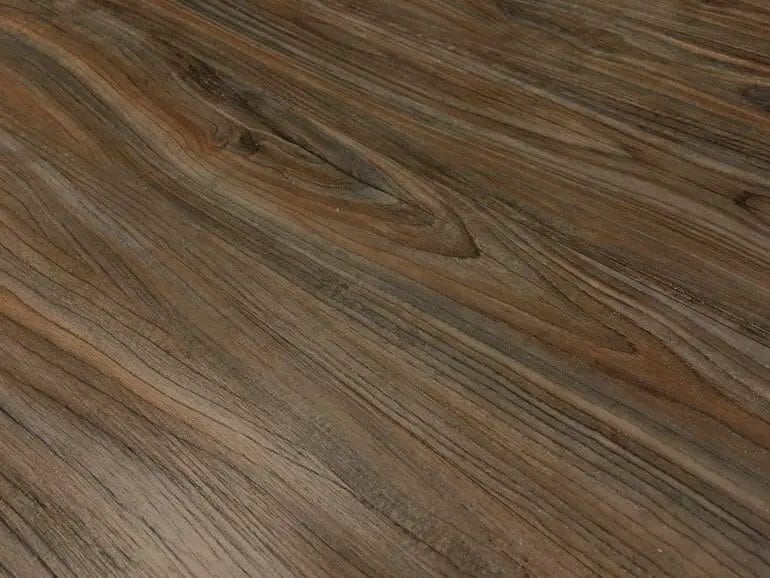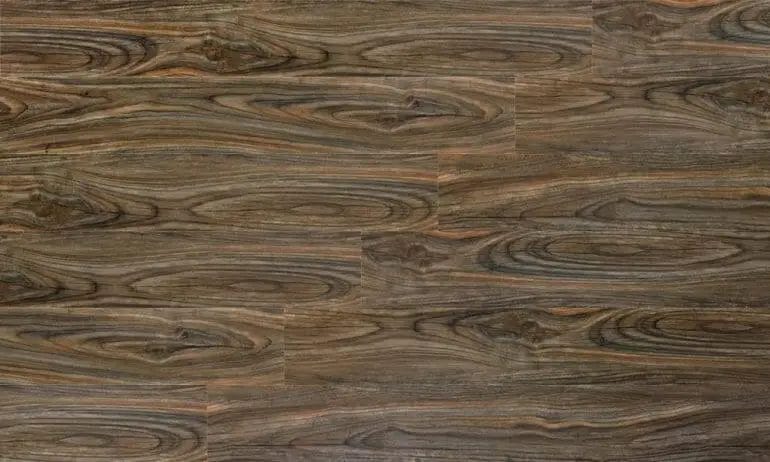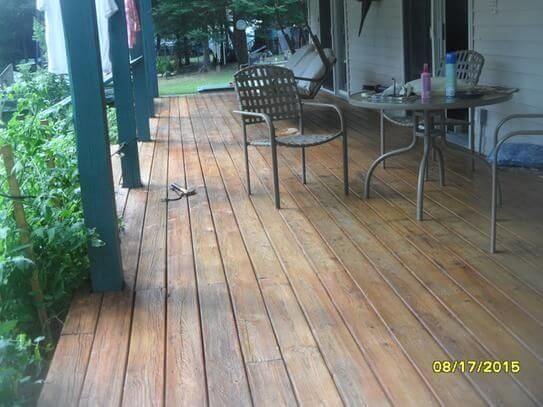Yes, cedar wood is naturally resistant to water and has inherent waterproof properties. It contains natural oils that act as a protective barrier against moisture, preventing water penetration and rotting. This makes cedar wood an excellent choice for outdoor applications such as decks, fences, and siding, as it can withstand the elements without deteriorating. Its waterproof nature also makes it suitable for indoor uses like saunas and bathrooms, where moisture levels are higher. In addition to its waterproof characteristics, cedar wood is also known for its beautiful grain and pleasant aroma, making it a popular choice in construction and woodworking projects.

How to Properly Waterproof Cedar Wood
Cedar wood is known for its natural beauty and durability, making it a popular choice for outdoor furniture, decking, and siding. However, like any wood, cedar is susceptible to damage from moisture, which can cause warping, rotting, and deterioration over time. To ensure the longevity of your cedar wood projects, it is essential to properly waterproof them. In this section, we will discuss some effective methods and techniques for waterproofing cedar wood.

1. Choose the Right Waterproofing Product
The first step in waterproofing cedar wood is selecting the appropriate product. There are various waterproofing options available, including oils, stains, and sealants. Before making a decision, consider factors such as the desired finish, level of protection, and ease of application. Oil-based products tend to penetrate deep into the wood, providing excellent moisture resistance, while stains offer both protection and color enhancement. Sealants create a protective barrier on the surface, preventing water from seeping into the wood.
2. Prepare the Wood Surface
Prior to applying any waterproofing product, it’s crucial to prepare the cedar wood surface properly. Start by cleaning the wood to remove any dirt, grime, or mildew using a mild detergent and water. Scrub the surface gently with a soft brush or sponge, then rinse thoroughly and allow it to dry completely. Sanding the wood with fine-grit sandpaper can help create a smooth surface and enhance the absorption of the waterproofing product.
3. Apply the Waterproofing Product
Once the cedar wood is clean and dry, it’s time to apply the chosen waterproofing product. Follow the manufacturer’s instructions carefully for the best results. If using an oil-based product, apply it with a brush, roller, or sprayer, working the product into the wood’s grain. Allow the first coat to penetrate and dry, then apply additional coats as necessary to achieve the desired level of protection. For stains and sealants, use a brush or roller to evenly coat the surface, following the recommended number of coats.
4. Maintain and Reapply as Needed
Proper maintenance is vital for preserving the waterproofing of cedar wood. Regularly inspect your cedar wood projects for signs of wear or damage, such as fading or water absorption. If you notice any issues, clean the wood surface and reapply the waterproofing product as needed. The frequency of reapplication depends on various factors, including the climate, exposure to sunlight, and the quality of the original waterproofing. Generally, it is recommended to reapply the product every 1-3 years for optimal protection.
5. Consider Additional Protective Measures
To further enhance the waterproofing of cedar wood, you can take additional measures. One option is to use a clear or tinted waterproof sealant on the wood’s end grain, which is more vulnerable to moisture absorption. Additionally, you can consider incorporating overhangs or covering structures to shield your cedar wood projects from direct exposure to rain or excessive sunlight. Regularly remove debris and leaves from the wood surface to prevent water accumulation.
In summary, properly waterproofing cedar wood is essential for maintaining its beauty and longevity. By choosing the right waterproofing product, preparing the wood surface, applying the product correctly, and conducting regular maintenance, you can ensure that your cedar wood projects are well-protected from moisture and can withstand the test of time.

Effective Sealants and Finishes for Cedar Wood
Cedar wood is a popular choice for outdoor projects due to its natural beauty and durability. However, to ensure the longevity and appearance of cedar wood, it is crucial to apply the right sealant or finish. In this section, we will discuss some effective sealants and finishes that can protect and enhance the natural beauty of cedar wood.
1. Clear Sealants
Clear sealants are a popular choice for cedar wood as they provide protection without altering the natural color and grain of the wood. They form a transparent barrier that prevents moisture penetration, UV damage, and insect infestation. Clear sealants are available in both oil-based and water-based formulations. Oil-based sealants provide excellent water resistance and require less frequent reapplication, but they may slightly darken the wood. Water-based sealants, on the other hand, dry quickly, emit fewer fumes, and are more environmentally friendly.
2. Semi-Transparent Stains
Semi-transparent stains are another option for protecting cedar wood. These stains contain pigments that enhance the wood’s natural color while still allowing the grain to show through. They offer UV protection and waterproofing properties. Semi-transparent stains are available in a variety of colors to match your desired aesthetic. It is essential to choose a stain specifically formulated for cedar wood to ensure proper adhesion and durability.
3. Solid Color Stains
If you prefer a more opaque finish, solid color stains are a great choice. These stains provide a solid, painted-like appearance while still allowing the texture of the wood to be visible. Solid color stains offer superior protection against UV rays, moisture, and mildew. They are an excellent option for heavily weathered or damaged cedar wood. However, it is important to note that solid color stains will completely hide the natural beauty and grain of the wood.
4. Oil Finishes
Oil finishes, such as linseed oil or tung oil, are a traditional choice for cedar wood. These finishes penetrate the wood fibers, nourishing and enhancing its natural beauty. Oil finishes provide moderate protection against moisture, UV rays, and insects. They require regular reapplication to maintain their effectiveness. Oil finishes tend to darken the wood slightly, giving it a warm and rich appearance.
5. Polyurethane
Polyurethane is a durable and long-lasting finish that forms a hard protective layer on the surface of cedar wood. It provides excellent resistance against moisture, UV rays, and scratches. Polyurethane finishes are available in both water-based and oil-based formulations. Water-based polyurethane finishes dry quickly, emit fewer fumes, and are more environmentally friendly, while oil-based polyurethane finishes offer superior durability and a deeper, richer finish.
Choosing the right sealant or finish for cedar wood is essential to protect and enhance its natural beauty. Clear sealants, semi-transparent stains, solid color stains, oil finishes, and polyurethane all offer different levels of protection and aesthetic options. When selecting a sealant or finish, consider factors such as desired appearance, level of protection needed, and ease of application. By properly sealing and finishing your cedar wood, you can ensure its longevity and maintain its stunning appearance for years to come.

Maintaining the Waterproofing Properties of Cedar Wood
Cedar wood is a popular choice for outdoor furniture, decking, and siding due to its natural beauty and durability. One of the key characteristics of cedar wood is its natural ability to resist water damage. However, over time, the waterproofing properties of cedar wood can diminish. In this section, we will explore effective methods to maintain the waterproofing properties of cedar wood and prolong its lifespan.
1. Regular Cleaning
The first step in maintaining the waterproofing properties of cedar wood is to ensure it is regularly cleaned. Dirt, dust, and other debris can accumulate on the surface, causing the wood to deteriorate faster. Use a soft brush or cloth to gently remove any dirt or grime from the surface of the wood. Avoid using harsh chemicals or abrasive cleaners, as they can strip away the natural oils in cedar wood.
2. Applying a Waterproof Sealant
To enhance the waterproofing properties of cedar wood, applying a waterproof sealant is crucial. Choose a high-quality sealant specifically designed for cedar wood. Before applying the sealant, make sure the wood is clean and dry. Use a brush or roller to evenly apply the sealant, following the manufacturer’s instructions. Allow the sealant to fully dry before exposing the wood to water or moisture.
3. Regular Refinishing
Over time, the protective sealant on cedar wood can wear off, leaving the wood vulnerable to water damage. It is important to regularly refinish the wood to maintain its waterproofing properties. Start by cleaning the wood surface as mentioned earlier. Then, lightly sand the surface to remove any rough areas or old sealant. Apply a fresh coat of waterproof sealant, ensuring complete coverage. Allow the sealant to dry completely before using or exposing the wood to water.
4. Avoid Excessive Moisture Exposure
To prevent unnecessary damage to cedar wood’s waterproofing properties, it is essential to avoid excessive moisture exposure. While cedar wood is naturally resistant to water, prolonged exposure to moisture can still lead to decay and rot. Avoid placing cedar furniture in areas with poor drainage or constant moisture. Use protective covers during rainy seasons, and ensure proper airflow around the wood to avoid moisture buildup.
5. Regular Inspections
Regular inspections of cedar wood can help identify any signs of water damage or decay early on. Check for any cracks, warping, or discoloration on the wood surface. If any issues are noticed, take immediate action to address them. Repair or replace any damaged areas and reapply a waterproof sealant as necessary to maintain the wood’s waterproofing properties.
In summary, maintaining the waterproofing properties of cedar wood requires regular cleaning, applying a waterproof sealant, regular refinishing, avoiding excessive moisture exposure, and conducting regular inspections. By following these steps, you can ensure that your cedar wood remains beautiful, durable, and resistant to water damage for years to come.
How Cedar Wood Compares to Other Waterproof Materials
Cedar wood is a popular choice for outdoor construction due to its natural resistance to rot and decay. It has been widely used for centuries in various applications, including fences, decks, siding, and even boats. One of the key factors that make cedar wood stand out is its ability to repel water and maintain its structural integrity even in wet conditions.
When comparing cedar wood to other waterproof materials, such as pressure-treated lumber or composite decking, there are several important characteristics to consider:
1. Natural Water Resistance
Cedar wood contains natural oils and resins that act as a protective barrier against moisture. These oils help prevent water absorption and inhibit the growth of fungi and bacteria that can cause decay. This natural water resistance makes cedar wood an excellent choice for outdoor applications where exposure to rain, snow, and humidity is common.
2. Durability
Compared to other waterproof materials, cedar wood is known for its exceptional durability. It has a natural resistance to weathering, insect damage, and UV rays. Cedar wood is less prone to warping, cracking, or splintering when exposed to harsh environmental conditions. Additionally, it has a higher strength-to-weight ratio than many other types of wood, making it a sturdy and reliable choice for outdoor structures.
3. Environmental Sustainability
One of the key advantages of using cedar wood is its eco-friendly nature. Cedar trees grow relatively quickly and can be sustainably harvested. Unlike pressure-treated lumber, cedar wood does not require the use of harmful chemicals or preservatives to enhance its waterproof properties. This makes cedar a more environmentally conscious choice for those who prioritize sustainability.
4. Aesthetics
Cedar wood is highly prized for its natural beauty and rich grain patterns. It has a warm, reddish-brown color that adds character and charm to any outdoor project. Over time, cedar wood develops a silvery patina when exposed to the elements, enhancing its rustic appeal. In comparison, other waterproof materials may lack the organic and timeless look that cedar wood provides.
5. Maintenance
While cedar wood is naturally resistant to moisture, it still requires some maintenance to prolong its lifespan. Regular cleaning, sealing, and staining can help protect the wood and maintain its water-repellent properties. However, compared to other materials that may require frequent painting or sealing, cedar wood generally requires less maintenance over time.
In summary, cedar wood offers unique advantages when compared to other waterproof materials. Its natural water resistance, durability, sustainability, aesthetic appeal, and lower maintenance requirements make it a preferred choice for outdoor projects. Whether you are building a deck, a fence, or any other outdoor structure, cedar wood provides a reliable and long-lasting solution.
FAQs
Is cedar wood waterproof?
No, cedar wood is not completely waterproof. While it has natural water-resistant properties, it can still absorb water over time. To enhance its resistance to water, you can apply a sealant or varnish to protect the wood.
Conclusion
In conclusion, while cedar wood is known for its natural resistance to decay and rot, it is not completely waterproof. Although it contains natural oils and resins that make it more resistant to water damage compared to other types of wood, prolonged exposure to water can still cause it to warp, split, or crack over time. Therefore, it is important to protect cedar wood with appropriate sealants or finishes to enhance its water resistance and ensure its longevity. Whether you are using cedar wood for outdoor furniture, decking, or siding, maintaining its water repellency is crucial for preserving its beauty and durability.